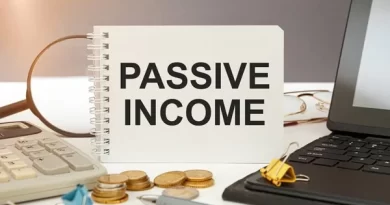How to Build an Emergency Fund: Your Essential Guide
An emergency fund serves as your financial safety net, ready to protect you from life’s unpredictable challenges.Whether it’s a sudden medical expense, a job loss, or an urgent home repair, having a dedicated fund can save you from financial stress. Creating this safety net may seem overwhelming, but with a step-by-step approach, you can build an emergency fund that provides lasting security.
Why You Need an Emergency Fund?
Life is full of surprises, and not all of them are pleasant. Unplanned expenses, such as car repairs or hospital bills, can disrupt your finances if you’re unprepared. A well-funded emergency savings account ensures you won’t need to take out high-interest loans or dip into long-term investments to cover these costs.
Emergency Funds for Individuals:
For individuals, an emergency fund provides peace of mind by covering unexpected personal expenses. It helps you maintain financial stability even during tough times, like job loss or medical emergencies.
Business Emergency Funds:
For business owners, a business emergency fund is essential. It safeguards your company during financial disruptions, covering operational costs like payroll, utilities, or rent. A small business emergency fund is particularly vital for businesses operating in seasonal or unpredictable markets.
Whether you’re managing personal finances or running a business, an emergency fund is your financial lifeline when unexpected situations arise.
Steps to Build an Emergency Fund:
Building an emergency fund doesn’t have to be complicated. Follow these actionable steps to get started:
1. Define Your Savings Target:
Begin by calculating the amount required for your emergency fund. Experts generally suggest setting aside enough to cover three to six months of essential living costs.
For entrepreneurs, assess your fixed expenses—like payroll, rent, and utilities—to establish the right amount for a business emergency fund. For small businesses, aim to save at least three months’ worth of vital operational expenses.
2. Choose the Right Savings Account:
Open a dedicated emergency savings account to keep your funds separate from everyday spending. This helps you avoid the temptation of using the money for non-urgent needs.
Look for the best savings account for an emergency fund, focusing on accounts that offer:
- Competitive interest rates.
- No hidden fees.
- Easy access when emergencies arise.

3. Start Small, Save Consistently:
You don’t need to save the full amount immediately. Begin with small, manageable contributions and stay consistent. Automate deposits into your emergency savings account to make saving a habit. Even a modest monthly contribution can grow into a significant amount over time.
4. Reduce Unnecessary Expenses:
Review your budget to find opportunities for reducing expenses. Redirecting those savings into your emergency fund can accelerate your progress. Simple changes, like cooking at home instead of dining out or canceling unused subscriptions, can make a big difference.
5. Boost Your Income:
If you need to save quickly or get emergency money, consider additional income streams. Take on freelance work, start a side hustle, or sell items you no longer use. Use these earnings to build your fund faster.
Maintaining Your Emergency Fund:
Building an emergency fund is just the beginning; maintaining it is just as important.
- Reserve It for True Emergencies:
Use your fund only for urgent and unforeseen expenses, such as medical emergencies, car repairs, or essential home repairs. Avoid using it for discretionary spending. - Rebuild After Withdrawals:
If you use funds from your emergency savings, make it a priority to restore the balance promptly. Treat rebuilding your fund as a monthly financial commitment.
- Regularly Reevaluate Your Fund:
As your financial situation changes, reassess the size of your emergency fund. For instance, if your living expenses increase or your business expands, adjust your fund accordingly.
FAQs About Emergency Funds:
Q: What’s the ideal amount to save in my emergency fund?
A: Aim to save three to six months’ worth of essential expenses. Business owners should target three months of fixed operational costs for a business emergency fund.
Q: What’s the best place to keep my emergency fund?
A: A high-yield savings account is often the best savings account for an emergency fund. It offers easy access and allows your savings to grow through interest.
Q: What if I need emergency money but don’t have enough saved?
A: Consider temporary solutions like reducing expenses, taking on extra work, or applying for low-interest loans. However, focus on rebuilding your emergency fund as quickly as possible.
Q: Can I use my emergency fund for business expenses?
A: It’s best to maintain separate funds for personal and business needs. A business emergency fund ensures your operations continue smoothly during financial hiccups.
Q: How can I build an emergency fund on a tight budget?
A: Start small with what you can afford, automate your savings, and look for ways to cut costs or earn extra income. The key is consistency.
Benefits of an Emergency Fund:
- Financial Security: An emergency fund ensures you can handle unexpected expenses without taking on debt.
- Debt Avoidance: With money set aside, you can avoid high-interest loans or credit cards during emergencies.
- Business Stability: A small business emergency fund protects your business from disruptions, helping you maintain operations during challenging times.
- Peace of Mind: Knowing you’re financially prepared allows you to face uncertainties with confidence.
Final Thoughts:
Building an emergency fund is a vital step toward achieving financial security. Whether it’s for personal use or business protection, having a dedicated fund ensures you’re ready for life’s unexpected challenges.
Start small but stay consistent. Choose the best savings account for an emergency fund, set a realistic savings goal, and automate your contributions. Over time, your emergency fund will grow into a financial safety net you can rely on.
Don’t wait for an emergency to realize the importance of being prepared. Begin your journey to financial stability today and enjoy the peace of mind that comes with being ready for whatever life throws your way.





